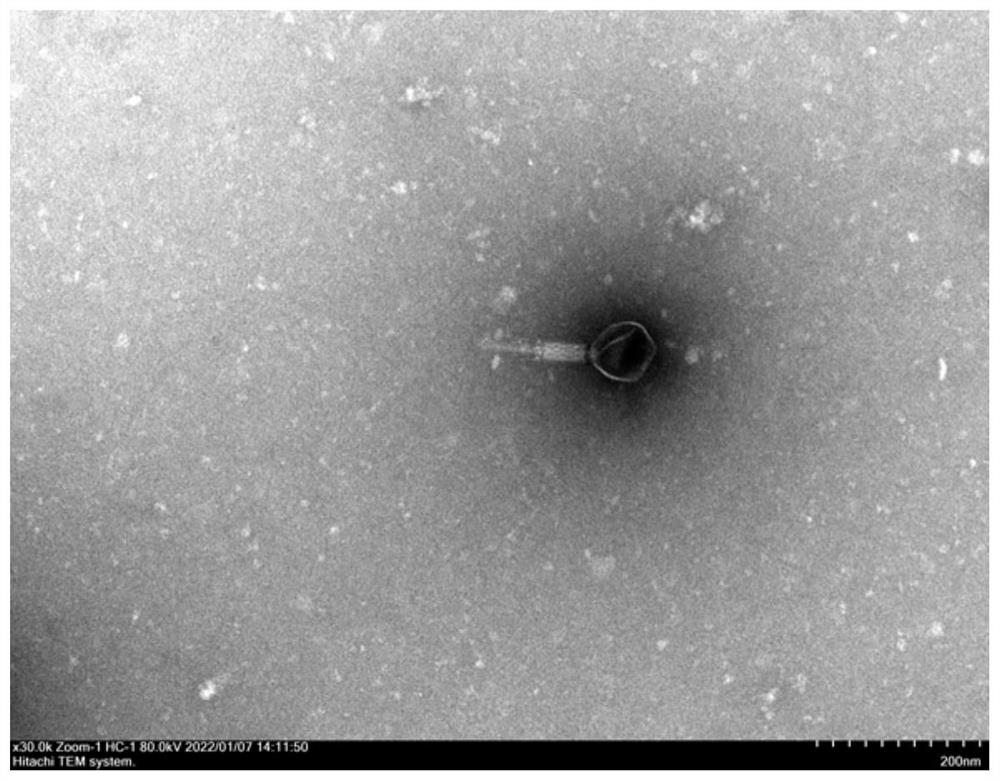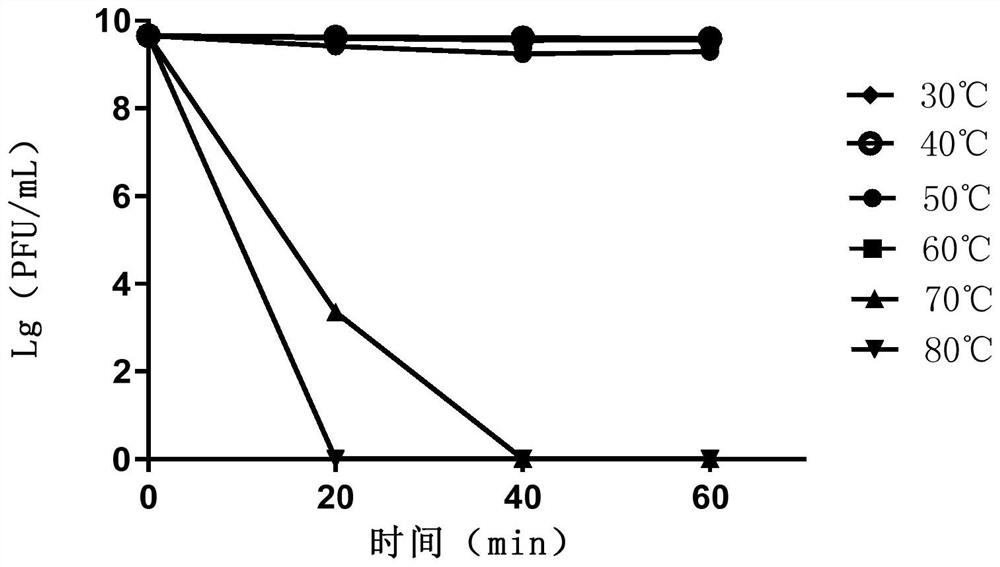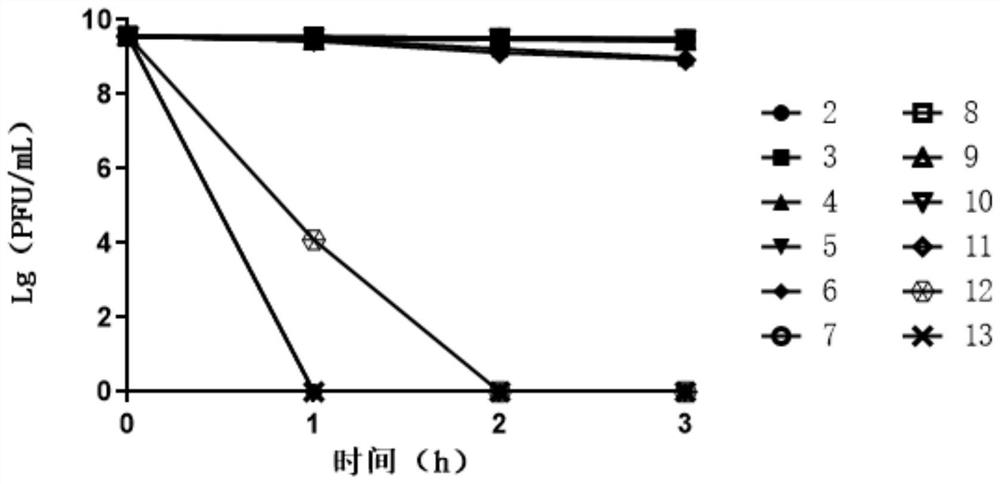Citrobacter freundii bacteriophage, bacteriophage composition and application thereof
A technology of citric acid freundii and bacteriophage, applied in the field of microorganisms, can solve problems such as phage resources that have not been found in Citrobacter freundii disease, and achieve the diversification of application methods, reduce morbidity and mortality, and reduce the probability of disease incidence. Effect
- Summary
- Abstract
- Description
- Claims
- Application Information
AI Technical Summary
Problems solved by technology
Method used
Image
Examples
Embodiment 1
[0043] Example 1 Isolation and culture of bacteriophage
[0044] (1) Preparation of host bacterial suspension
[0045] Citrobacter freundii RF03 was streaked on a TSA plate in three areas, and cultured upside down at 37°C for 16 hours to obtain a uniform single colony. The single colony was picked and inoculated into 5 mL of TSB liquid medium, at 170 rpm, 37 Proliferate to logarithmic growth phase under the condition of ℃ to obtain fresh host bacteria liquid.
[0046] (2) Isolation and purification of bacteriophage
[0047] 1. Phage isolation
[0048] The sludge collected from a bay area in Haikou City, Hainan Province was added to the bubble sample bottle, and about 150 mL of double-distilled water was added to mix well, 200 μL of bacterial solution was added and 50 mL of TSB solution was added to mix well, and enriched at 37°C for 24 hours; the enrichment was over. Then, centrifuge at 11000r / min for 10min, filter the supernatant through a 0.22um filter to obtain a phage s...
Embodiment 2
[0058] Example 2 Determination of biological characteristics of bacteriophage
[0059] (1) Electron microscope detection of bacteriophages
[0060] 1. Experimental method:
[0061] Take 20 μL of titer of 10 9 PFU / mL of the phage to be tested was dropped on the copper mesh, precipitated for 15 min, the excess liquid was absorbed with filter paper, stained with 2% phosphotungstic acid for 30 min, and observed by electron microscope after drying.
[0062] 2. Experimental results and analysis
[0063] like figure 1 The phage has a head length of 73 nm, a diameter of about 68 nm, a tail length of about 63 nm, and a retractable tail sheath, according to the classification of the ninth report of the International Committee on Taxonomy of Viruses (ICTV). Standard identification, it can be determined that the phage belongs to the Myotail phage family, and it is named PRF01.
[0064] (2) Determination of lysis profile of bacteriophage
[0065] 1. Host bacteria:
[0066] The host ...
Embodiment 3
[0110] Example 3 The effect of phage PRF01 injection on the metabolic process of Crayfish in vivo
[0111] 1. Experimental method
[0112] Healthy Crayfish with a weight of about 20 g were selected and fasted overnight. One control group and three experimental groups were set up, with 40 in each group. Do the following to it:
[0113] The shrimps in the control group were injected with 0.1 mL of TSB medium, and the injection was carried out through the body cavity injection method, which was injected from the base of the second appendage of Crayfish. The phage content is 1×10 8 PFU / mL. After injection, the contents of phage in the shrimp intestine, hepatopancreas of the tested shrimp and the normal shrimp in the blank control group were detected at 0.5h, 5h, 10h, 24h, 48h, 72h, 96h, 120h, and 144h, respectively.
[0114] 2. Experimental results and analysis
[0115] 30 minutes after the injection of phage PRF01, the existence of phage was detected in the shrimp intestine ...
PUM
| Property | Measurement | Unit |
|---|---|---|
| Diameter | aaaaa | aaaaa |
Abstract
Description
Claims
Application Information
 Login to View More
Login to View More - R&D
- Intellectual Property
- Life Sciences
- Materials
- Tech Scout
- Unparalleled Data Quality
- Higher Quality Content
- 60% Fewer Hallucinations
Browse by: Latest US Patents, China's latest patents, Technical Efficacy Thesaurus, Application Domain, Technology Topic, Popular Technical Reports.
© 2025 PatSnap. All rights reserved.Legal|Privacy policy|Modern Slavery Act Transparency Statement|Sitemap|About US| Contact US: help@patsnap.com



